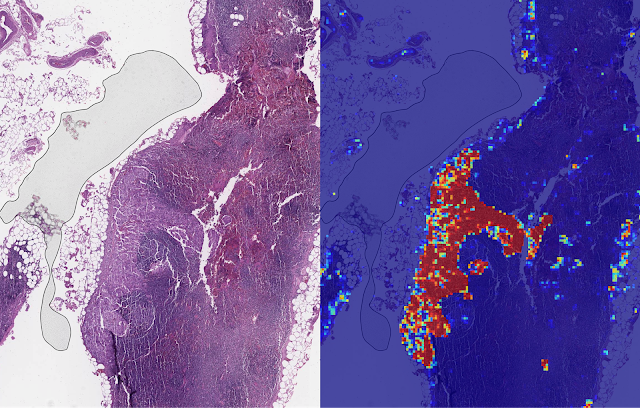It’s been a while since I last reviewed some of the more interesting AI pieces of tech out there. So today I thought I’d do a quick overview for everyone to help catch up a bit!
Table of Contents
Dancing Robot Overlords
Boston Dynamics is at it once again releasing a few new videos that are both impressive and hilarious.
First up we have their Atlas robot which is, obviously, humanoid. While previous videos have it walking over rocky terrain or even jogging a bit this goes even further. Now it seems it can not only walk, jog and backflip but also jump over logs and up boxes.
Clearly hiding up a tree isn’t going to save you when the robot apocalypse comes anymore! They also have another impressive video of their dog like robot Spot navigating a live construction site. The whole video is actually quite boring which I think is a testament to just how well it handles the environment. The best one by far though is their UpTown Spot video below. 100% worth a watch and definitely a soon-to-be meme.
Google Takes Out Another Health Expert
We previously reported how Google AI Leveled Up Retinal Scans by using the simple test to help predict many other things like your age, sex, whether you’re a smoker or diabetic, what your BMI is, your blood pressure and even the likelihood that you will be readmitted to hospital.

Left: sample view of a slide containing lymph nodes, with multiple artifacts. Right: LYNA identifies the tumor region in the center (red), and correctly classifies the surrounding artifact-laden regions as non-tumor (blue). Source: https://ai.googleblog.com
Now though they’re using AI again to help detect whether or not someone has Metastatic Breast Cancer. Their new LYmph Node Assistant or LYNA should have anyone who’s in the pathologist’s business a bit worried as this isn’t one of those cases where the AI is “kinda good”.
As they mention in their post:
Studies have shown that about 1 in 4 (human reviewed) metastatic lymph node staging classifications would be changed upon second pathologic review, and detection sensitivity of small metastases on individual slides can be as low as 38% when reviewed under time constraints.
That’s not such great numbers for the humans! Meanwhile their new LYNA AI algorithm did… slightly better…
In both datasets, LYNA was able to correctly distinguish a slide with metastatic cancer from a slide without cancer 99% of the time. Further, LYNA was able to accurately pinpoint the location of both cancers and other suspicious regions within each slide, some of which were too small to be consistently detected by pathologists.
For now Google – and others – are only suggesting that pathologist’s use this new AI tool in concert with their own skills “to reduce the burden of repetitive identification tasks and to allow more time and energy for pathologists to focus on other, more challenging clinical and diagnostic tasks“.
However it’s been quite common historically that this type of development is but a first step. Eventually the entire process is automated by the computer and then shortly thereafter exclusively performed by the computer once the general consensus is that humans essentially can’t be trusted anymore.
Never Answer A Call Again!
In what will I’m sure be a dream come true for those with phone phobias Google has announced Call Screen. This new tech uses their famous Google Duplex AI technology to answer your incoming call, screen the person in real time and then write out what the caller is saying on your phone so you can decide whether or not to answer it.
Apparently this will be coming to their entire Google Pixel lineup, however we won’t be seeing it in the wild until at least November 2018 or possibly later if you live outside of America.
It’s a pretty unique and handy feature that I know a lot of people will appreciate assuming it works as described. That being said I’m not sure how the caller will feel…
The 4th Wave Of AI
Finally, if you’re interested in AI and what great things it can do now, you might not have considered where it’ll be going in the future. In the below video Hod Lipson talks about what he’s seeing in the bleeding edge and where he expects AI to go over the next 5-10 years and it’s quite fascinating.
One of the main points he is predicting is that AI will start to enter into and consume the creative side of problems. One of the examples he shows are these people.

A small sample of people that don’t actually exist. People created by AI
All those faces – and many more – were created, imagined from nothing by a computer. The same can be done for chairs, bedrooms, cars, trucks and more. I can see this being an amazing leap forward particularly in video games where it will generate unique characters or vehicles every time you play the game.
Check out the full talk below from Singularity University.
The benefits include: 1) How to get those silky smooth videos that everyone loves to watch, even if you're new 2) How to fly your drone, from taking off to the most advanced flight modes 3) Clear outlines of how to fly with step-by-step instructional demonstrations and more 4) Why flying indoors often results in new pilots crashing their drone 5) What other great 3rd party apps are out there to get the most out of your drone 6) A huge mistake many pilots make when storing their drone in the car and how to avoid it 7) How to do all of these things whilst flying safely and within your countries laws.





0 Comments